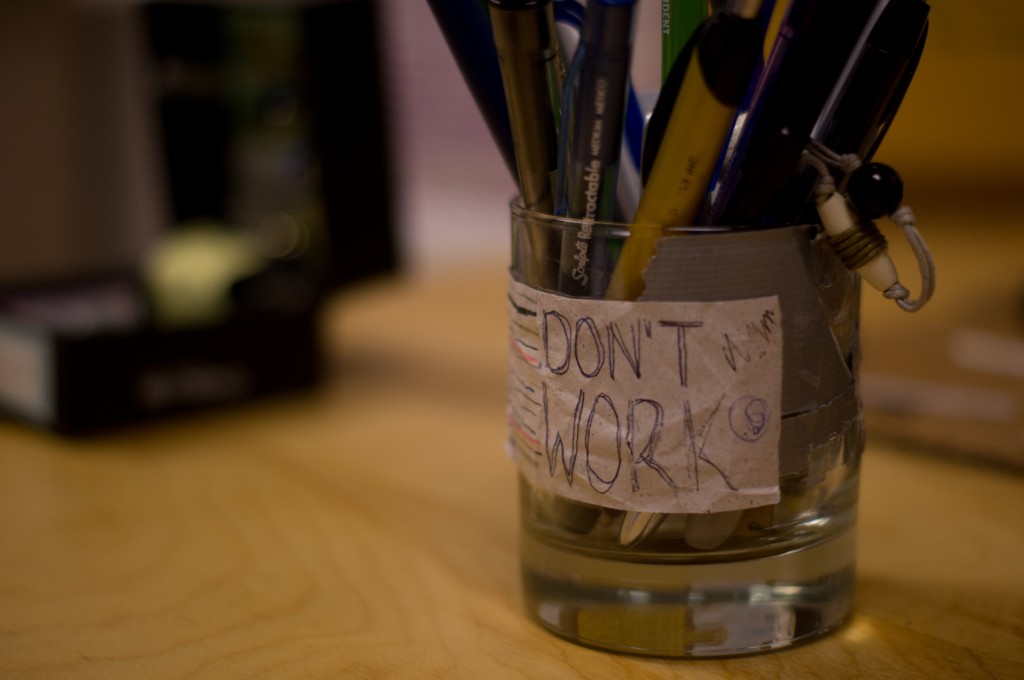
“You are an explorer.”
These words greet visitors at the DU Museum of Anthropology (DUMA) before entering an exhibit that defies preconceptions of what an anthropology exhibit looks like.
Rather, it somewhat resembles a kindergarten arts and crafts room.
DUMA has a new exhibit called “Explorations,” based on the book “How to Be an Explorer of the World: Portable Life Museum” by Keri Smith. The gallery, in Sturm Hall 102, is free to the public 10 a.m. to 4 p.m. every weekday until the end of October.
Christina Kreps, an associate professor of Anthropology, used Smith’s book in her anthropology class “Museums and Public Culture” last year and was inspired to turn it into an exhibit.
“I think the book is a fun and effective way to help students develop their observation skills, which are very important in anthropology, and to stimulate creativity,” said Kreps.
Many of the “explorations” in the exhibit are from Smith’s book, which includes 59 creative exercises to document and interpret the world around us.
“Exploration” exercises could include anything from writing ten things that aren’t noticeable on first glance to collecting objects with interesting patterns and light.
Keri Smith is the author of the popular blog “The Wish Jar”, as well as author of “Wreck this Journal,” “Mess: The Manual of Accidents and Mistakes” and other interactive creative guides.
These journals encourage readers to explore the world around them in both an ethnographic and artistic way.
“The author [Smith] makes the connection between making art and doing ethnography, and how artists and scientists, or ethnographers, are similar in how they collect, document, analyze and interpret the world around them,” said Kreps.
The gallery is curated by graduate students of anthropology, as well as by anthropology department staff members Anne Amati and Brooke Rohde.
The gallery in DUMA reflects varied anthropological interests through different exhibits displayed throughout the year.
For the current exhibit, graduate students contributed their examples of these “explorations,” such as a watercolor of everything a student ate one day, entitled “A Monday’s Consumption.”
“The most exciting part of the exhibit is how it is interactive and ever evolving as more is added to it each day created by students and visitors,” said Kreps.
The experience starts at the door, with a sign that invites those who enter to record, take notes, collect and otherwise “observe the world around you as if you’ve never seen it before.”
A small but brightly colored room encourages visitors to “please do not touch,” giving various meanings to what constitutes anthropology and art.
Preschool-age visitors came to visit on Sept. 27 from the Fisher Early Learning Center, an early childhood center with connections to DU and Morgridge College of Education.
Various projects created by graduate students and preschool-age visitors alike are displayed on shelves and posterboard.
The “World of Color” display covers an entire wall with multi-colored panels, where visitors are encouraged to write with Sharpies about what specific colors mean to them.
For example, a scribble on a yellow panel says “sunshine, daisies, butter mellow,” quoting a popular line from the first “Harry Potter and the Sorceror’s Stone.”
“Exploration No. 17” allows any visitor to create an instant sculpture with pipe cleaners, rubber bands and miscellaneous baubles like CDs and toilet paper rolls.
One wall allows visitors to rearrange an array of magnetized words to create random musings.
“I wanted to emphasize these connections between art and anthropology,” said Kreps.
For a different approach to art, anthropology and ethnography, visit the “Explorations” exhibit.











